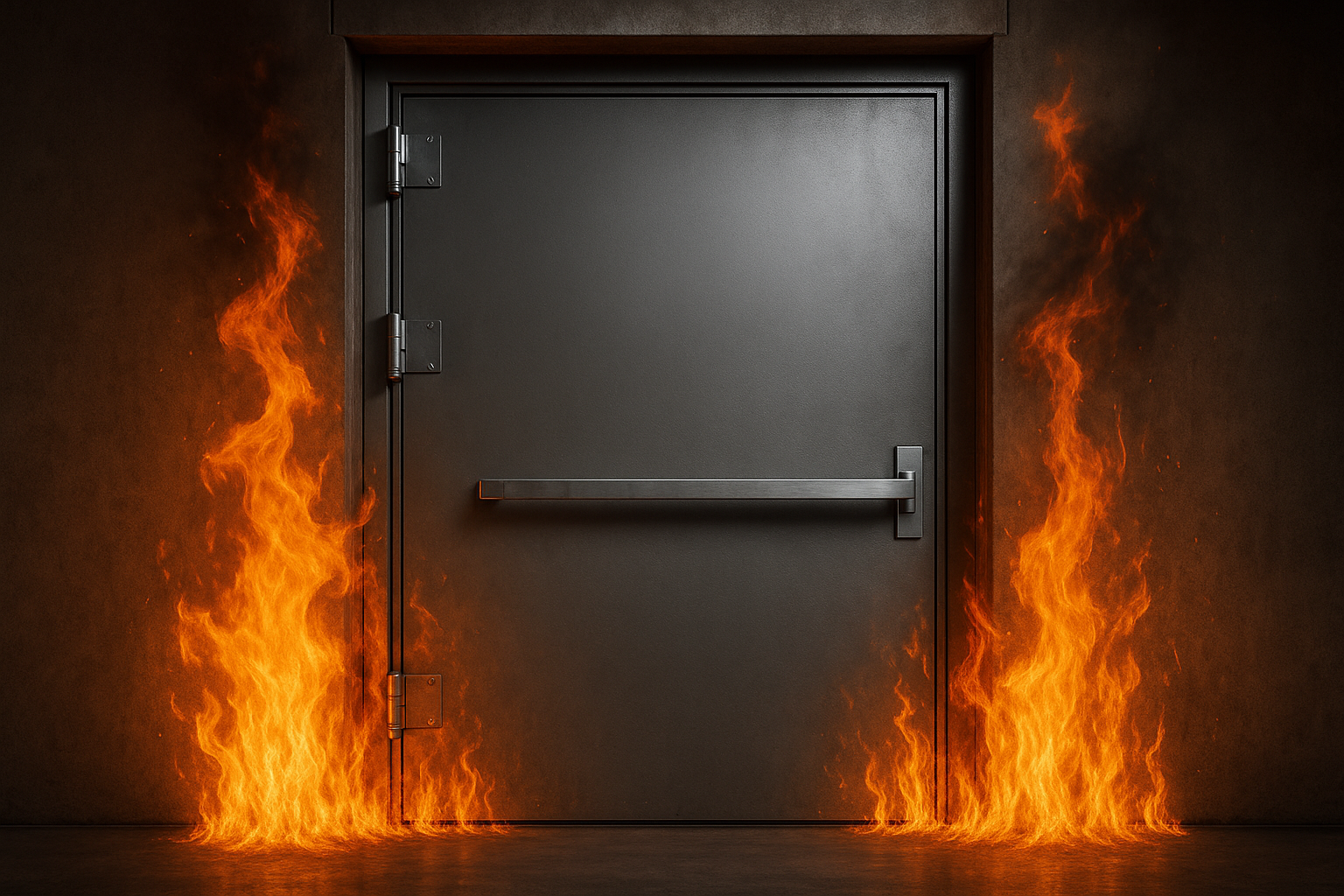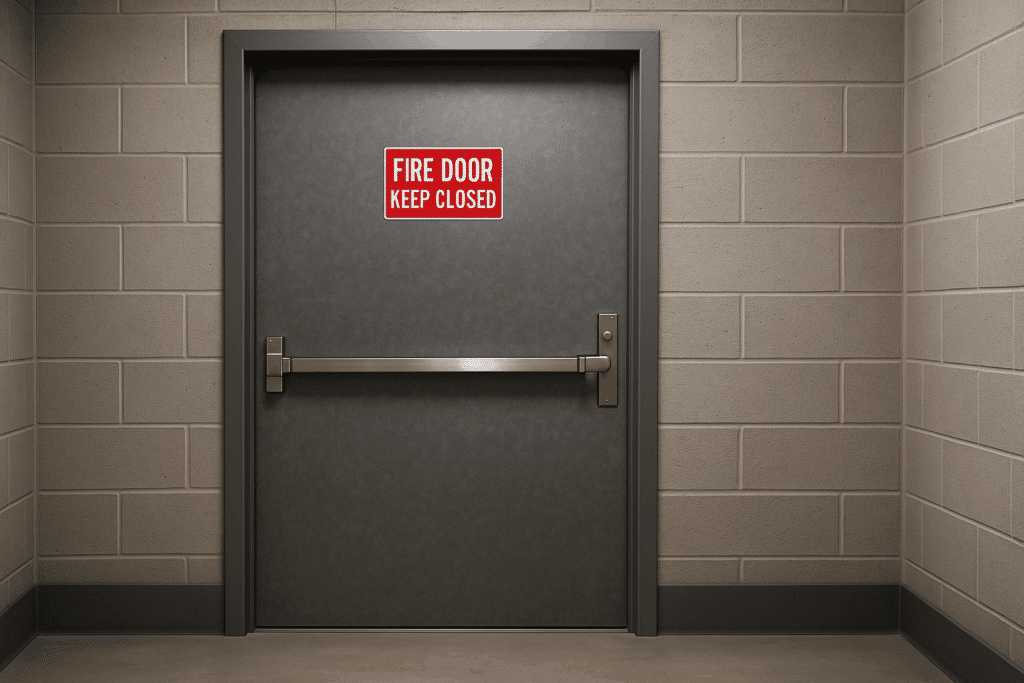When designing or upgrading a building, safety, durability, and performance should always be at the top of your priority list. Whether it’s an industrial facility, commercial property, or public space, investing in heavy-duty doors with fire resistance is one of the smartest decisions property owners and managers can make.
These doors do far more than separate rooms or provide access—they serve as critical safety features that can protect lives, property, and operations in the event of a fire or other emergencies. Moreover, they offer unmatched strength, long-term reliability, and even design flexibility to suit modern architecture.
In this blog, we’ll explore why these fire-resistant, heavy-duty doors are such a valuable investment, what makes them superior to standard doors, and how they enhance both safety and functionality in any building.
1. Understanding the Purpose of Heavy-Duty Fire-Resistant Doors
Fire-resistant doors are specifically engineered to contain fire, smoke, and heat for a certain duration—typically 20, 45, 60, 90, or 180 minutes—depending on their fire rating. This delay allows people more time to evacuate safely and gives firefighters a better chance of containing the blaze before it spreads.
Unlike standard doors, these doors are constructed from specialized materials like steel, reinforced aluminum, or composite cores that can withstand extreme temperatures without warping or collapsing. The heavy-duty aspect refers to their robust construction, which not only provides fire resistance but also stands up to daily wear and tear in high-traffic or industrial environments.
In essence, they serve a dual purpose: protecting lives during emergencies and providing long-lasting functionality every day.
2. Fire Safety Compliance and Legal Requirements
For commercial and industrial buildings, fire-rated doors aren’t just a good idea—they’re often a legal requirement. Building codes and safety standards, such as those from the National Fire Protection Association (NFPA) or local authorities, mandate the installation of fire-rated doors in specific areas like stairwells, corridors, and between different building sections.
Non-compliance can lead to severe penalties, increased insurance premiums, and even liability in case of a fire. By installing properly certified heavy-duty fire-resistant doors, you’re not only ensuring the safety of occupants but also staying compliant with regulations.
Regular inspections and maintenance by certified professionals also help keep these doors up to standard, ensuring they perform as expected when it matters most.
3. Long-Term Durability and Strength
Heavy-duty fire doors are designed for endurance. Unlike traditional wooden or hollow-core doors, they’re made with reinforced materials capable of handling constant use and exposure to harsh conditions.
Common materials include:
- Galvanized steel: Resistant to impact, corrosion, and heat.
- Stainless steel: Ideal for environments requiring extra hygiene, like hospitals or laboratories.
- Fire-resistant cores: Made of gypsum or mineral wool, offering thermal stability and flame resistance.
Because of their construction, these doors last significantly longer than standard doors. They resist dents, scratches, and environmental damage, making them a cost-effective solution over time.
By reducing replacement and repair costs, they offer both safety and financial savings.
4. Enhanced Building Safety Beyond Fire Protection
While fire resistance is their primary purpose, these doors also contribute to overall building safety in several other ways.
- Smoke Containment: Many models include smoke seals that prevent harmful gases from spreading through a building during a fire.
- Sound Insulation: The dense construction provides excellent acoustic control, which is beneficial for hospitals, offices, and schools.
- Security: Heavy-duty fire doors are difficult to breach, offering added protection against theft and vandalism.
- Thermal Insulation: Fire-rated cores can also help regulate temperature, contributing to energy efficiency.
These added benefits make them versatile investments suitable for a wide range of applications, from warehouses and factories to hotels and residential complexes.
5. Protection for Assets and Infrastructure
Fires can cause catastrophic losses—not only in terms of human safety but also in equipment, documents, and property. Heavy-duty fire-resistant doors act as a crucial barrier that limits damage by confining the fire to one area.
For instance:
- In commercial kitchens, these doors can stop flames from spreading into dining or office spaces.
- In data centers, they protect valuable electronic infrastructure.
- In industrial settings, they separate hazardous zones from administrative areas.
By containing the fire, they give emergency teams more time to respond and reduce the risk of complete property loss.
6. Increased Property Value and Insurance Benefits
When potential buyers or tenants evaluate a building, safety features like fire-rated doors are a strong selling point. They demonstrate a commitment to safety, reliability, and compliance—qualities that enhance a building’s overall value.
Moreover, insurance companies often recognize the reduced risk associated with fire-rated structures. Installing these doors can lead to lower premiums or additional coverage benefits, saving money in the long run.
Simply put, fire-rated doors are a smart financial investment as much as they are a safety measure.
7. Energy Efficiency and Environmental Benefits

Modern heavy-duty doors with fire-resistant materials also contribute to energy efficiency. Many designs feature thermal insulation and airtight seals that minimize heat transfer. This means reduced energy costs for heating and cooling, especially in large facilities.
In addition, many manufacturers now produce fire-rated doors using eco-friendly materials and sustainable processes, reducing the environmental footprint. By investing in such doors, you’re making a responsible choice that benefits both your building and the planet.
8. Low Maintenance and Longevity
Despite their complex engineering, heavy-duty fire-resistant doors require minimal maintenance. Regular inspections are typically all that’s needed to ensure they remain in top condition.
Routine maintenance tasks may include:
- Checking seals and gaskets.
- Ensuring smooth operation of closing mechanisms.
- Repainting or re-coating when necessary to prevent corrosion.
Because they’re built from high-quality materials, they’re less prone to issues like warping, swelling, or fading that affect standard doors. This long-term durability makes them a low-maintenance, high-performance solution for any building type.
9. Aesthetic Versatility for Modern Architecture
Gone are the days when fire-rated doors were purely utilitarian. Today’s models combine safety with style, allowing architects and designers to incorporate them seamlessly into modern spaces.
You can choose from a wide variety of finishes, including powder-coated colors, wood-grain patterns, or brushed metal designs. Some even feature glass inserts rated for fire resistance, allowing for visibility without compromising safety.
This means you can achieve your desired aesthetic while still meeting all safety regulations. Whether your building has a contemporary, industrial, or traditional design, there’s a fire-rated door that fits perfectly.
10. Ideal for Commercial, Industrial, and Public Buildings
Heavy-duty fire doors are essential in environments where safety and durability are non-negotiable. They are commonly used in:
- Warehouses and factories: To separate production areas from offices or storage spaces.
- Hospitals and laboratories: For infection control and fire containment.
- Educational institutions: To ensure safe evacuation routes.
- Hotels and residential complexes: To enhance occupant safety and meet building code requirements.
Their adaptability makes them suitable for nearly any commercial or public structure where both safety and performance are key priorities.
11. Integration with Building Automation Systems
As technology advances, fire-rated doors can now be integrated into modern building automation and safety systems. They can be connected to fire alarms, sprinklers, and emergency lighting systems for automatic response during a fire.
When a fire is detected, these doors automatically close to seal off specific zones, helping contain flames and smoke. This automation ensures a faster and more reliable response, even if the building is unoccupied.
Such smart integration enhances both efficiency and safety while aligning with today’s building management trends.
Conclusion
Incorporating heavy-duty doors with fire resistance is one of the smartest investments you can make for any commercial, industrial, or residential building. They offer unmatched protection against fire and smoke, meet stringent safety codes, and provide long-term value through durability, energy efficiency, and low maintenance.
Modern fire-rated doors don’t just serve a practical purpose—they also enhance design flexibility and can blend beautifully with contemporary architecture. With their advanced materials and innovative features, they stand as a testament to how safety and style can coexist effortlessly.
If you’re looking for innovative, visually appealing options that combine strength with sophistication, explore contemporary doors built to impress that redefine what safety and style can look like in modern architecture.

